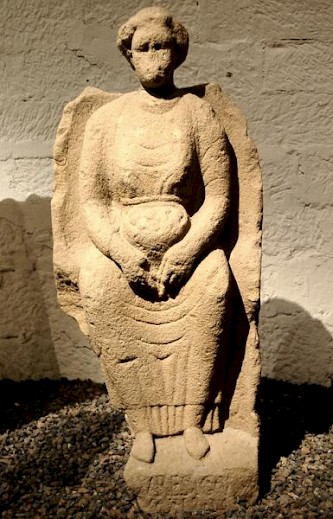Herecura
Herecura: ancient goddess, venerated along the northern shores of the Adriatic Sea and in Germania Superior.

The goddess Herecura or Herequra appears to have been comparable to the deity that is known as Persephone (in Greek): she was at the same time a goddess of death and fertility. Herecura's cult originated in the country north of the Adriatic Sea, where she and the death god (variously named Dis Pater and Sucellus) were jointly venerated in Aquileia. Later, Roman soldiers took her cult across the Alps to Germania Superior and Raetia.
The goddess is represented as a seated woman holding a basket with apples on her lap. This closely matches the iconography of the goddess Nehalennia, which creates some problems. The cult of Nehalennia can be found in Germania Inferior but the cult of Herecura appears to be Illyrian. There's no relation between the two goddesses.
Still, they not only share the same imagery, but also their dual nature as personifications of death and fertility. This is not uncommon: as we have already noticed, Persephone also has the same dual character. The explanation is probably that the soil is a source of wealth and at the same time man's final destination.
In Antiquity, like today, there were people who found it hard to pronounce the /H/. It is not surprising, therefore, that Herecura was also spelled like Arricura or even Aericura, which is a pun on aes and cura, "care of money". It is interesting to note that the goddess was also venerated as Aericurus, a male name, in Corbridge, Northumberland.